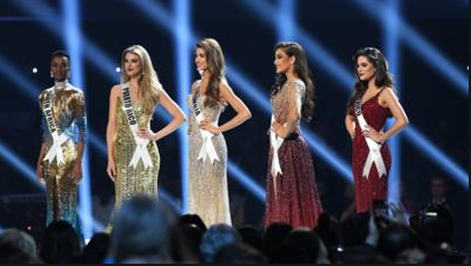Few things are as classically American as beauty pageants. However, they remain one of our most controversial traditions. in this day and age, are beauty pageants societally beneficial? --edrisina sklar

Few things are as classically American as beauty pageants. For years, women have trained to compete in pageants across the country. For years they’ve counted calories, practiced speeches, and memorized routines. Beauty pageants are deeply ingrained in our culture, yet they are one of America’s most controversial traditions.
American pageantry was born in 1921 , and these days, many question the relevance of a system that reflects such old fashioned “values.” There’s no denying the blatant objectification that these pageants promote, let alone the history of racial discrimination and physical danger that many contestants face.
A study by Johns Hopkins concluded that over half of the Miss Americas since 1970 have had a Body Mass Index under 18.5, deeming them technically malnourished, in accordance with the World Health Organization, which defines a healthy BMI between 20 and 25. On top of the drastic health risks contestants seem to face, the politics in beauty pageants also give cause for scrutiny.
A woman of color did not win a major American beauty pageant until 1969, although pageantry in America has been around since 1854. In fact, since Miss America started in 1921 to present day, exactly 11 women of color have won. Queer people too, have been staggeringly neglected.
This year, Rachel Slawson will be the first openely bisexual woman to compete in Miss USA. So while it’s true that the pageant industry has made progress towards a more diverse set of contestants, ( on an incredibly small scale,) it seems to many that this is too little too late. Can an industry so deeply rooted in discrimintation and closed mindedness really serve as a platform for progressive values?
Some say that Pageantry can provide a platform for people to promote messages of diversity and inclusion, broadcast to a wide audience. (Contestants often speak to political issues in the speech section of their competition.) However, if the winning demographic continues to be primarily white, straight, cis women, how inclusive can the message really be?
American pageantry was born in 1921 , and these days, many question the relevance of a system that reflects such old fashioned “values.” There’s no denying the blatant objectification that these pageants promote, let alone the history of racial discrimination and physical danger that many contestants face.
A study by Johns Hopkins concluded that over half of the Miss Americas since 1970 have had a Body Mass Index under 18.5, deeming them technically malnourished, in accordance with the World Health Organization, which defines a healthy BMI between 20 and 25. On top of the drastic health risks contestants seem to face, the politics in beauty pageants also give cause for scrutiny.
A woman of color did not win a major American beauty pageant until 1969, although pageantry in America has been around since 1854. In fact, since Miss America started in 1921 to present day, exactly 11 women of color have won. Queer people too, have been staggeringly neglected.
This year, Rachel Slawson will be the first openely bisexual woman to compete in Miss USA. So while it’s true that the pageant industry has made progress towards a more diverse set of contestants, ( on an incredibly small scale,) it seems to many that this is too little too late. Can an industry so deeply rooted in discrimintation and closed mindedness really serve as a platform for progressive values?
Some say that Pageantry can provide a platform for people to promote messages of diversity and inclusion, broadcast to a wide audience. (Contestants often speak to political issues in the speech section of their competition.) However, if the winning demographic continues to be primarily white, straight, cis women, how inclusive can the message really be?
Can beauty pageants overcome their history of bias?
In 2016, an experiment run by Russia and Hong Kong-based Youth Laboratories, and supported by companies such as Microsoft and Nvidia took place. It was a beauty pageant, judged by artificial intelligence. The idea was that AI would be able to judge contestants from a completely objective standpoint. However, as the results came in, it became increasingly clear that this was not the case. Results were shockingly similar to those produced by human judges. Out of 44 people that the algorithm determined to be the most physically appealing, all of the finalists were white except for six Asian contestants.
Research shows that while the machines weren’t blatantly programmed with biased tendencies, the fact that they were built by humans itself was enough. In other words, despite our efforts to create a completely objective way of judging beauty contests, personal bias still managed to get through. If bias like this is still prevalent in an honest effort to eliminate discrimination such as this one, how can human-run pageants possibly be trusted to judge looks objectively, let alone sexuality, gender orientation, etc?
While pageantry is a staple of American culture, it has yet to prove progress in the direction of inclusivity, or relevance in the 21st century. The bias and discrimination inherent in this system seem next to impossible to dismantle, causing many to question the contributions pageants make to American society.


